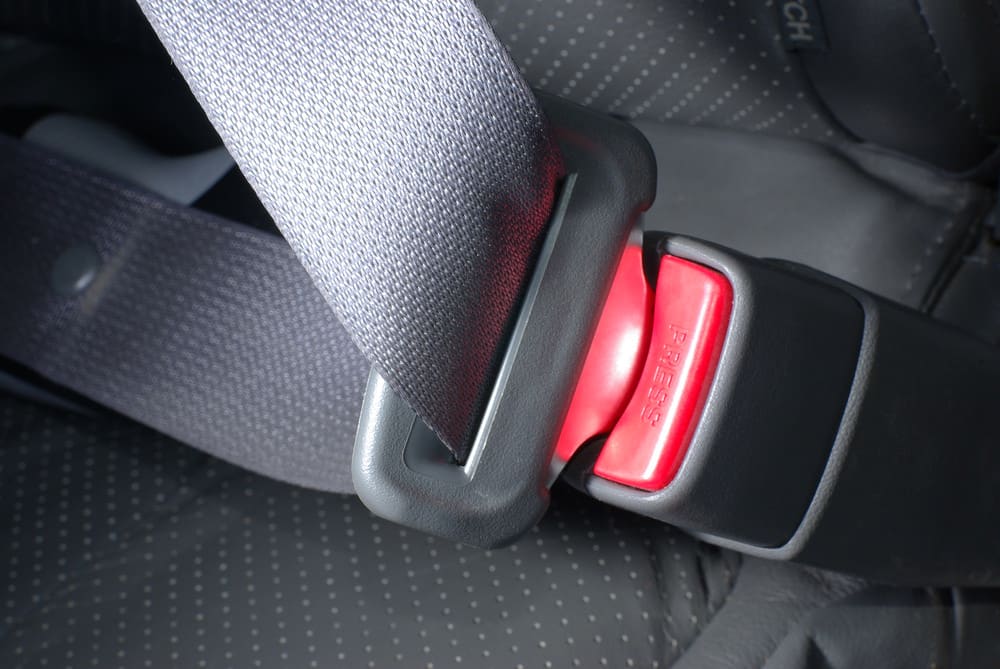

A brief history of seat belts
The first seat belts were not invented for a vehicle at all, but for tourists, painters, firemen, or anyone who worked in a job where they might need to be held safely. It wasn’t until the early 1950’s when a doctor in California conducted a study that linked the rudimentary seat belts to a decline in the high quantity of head injuries that were coming into the hospital he worked at. After his study was published, car manufacturers started to implement his idea of the retractable seat belt into their vehicle. The first car companies to integrate seat belts were Nash and Ford, quickly followed by Saab.
How seat belts work in a crash
The main purpose of a seat belt is to keep vehicle occupants safe in the event of a crash. The seat belt functions by keeping the occupant in a more static motion despite a sudden stop or change in momentum. A car moves with inertia, which is an object’s tendency to move until something works against the motion of that object. When the vehicle hits something, or is hit by something, that inertia changes. Without the seat belt, occupants can be thrown into various parts of the interior of the car, or thrown completely out of the car. The seat belt usually stops this from happening.
Taking a hit
If worn properly, a seat belt will spread the stopping force across the seat belt wearer’s pelvis and rib cage. These areas of the torso are two of the more sturdy parts of the body, so directing the force in those areas works to minimize the effect of the crash on the body. The seat belt itself is made of a webbed fabric that is strong yet flexible. It should allow a small amount of movement when worn properly, but in order for it to protect a person in a crash it needs to be a tight fit with little give.
Proper wear
Most seat belts have two parts. A lap belt that goes over the wearer’s pelvis, and the shoulder belt which extends over one shoulder and across the chest. For young children in the back seat, there is the option of adding a seat belt cover that will cushion the seat belt strap along their shoulder/neck area and keep the seat belt in its proper position for maximum safety of the child. Car seats are mandated for younger and smaller children because there is no safe way for them to wear a seat belt.
How the seat belt works:
The belt itself is made of webbed fabric. The retractor box sits on the floor or on the interior wall of the vehicle, and contains the spool and spring that the belt is rolled onto. The seat belt unspools from the spiraling spring that allows the vehicle occupant to pull the seat belt out. When the seat belt is unhooked, that same spiraling spring will automatically re-spool. Lastly is the lock itself. When the seat belt is unspooled and is across the person’s body, the webbed fabric ends in a metal tab, called the tongue. The tongue is inserted into the buckle. While the seat belt is being fastened, the vehicle occupant should have the seat in an upright position, and be sitting in the seat with hips and back against the back of the seat. If worn correctly at all times, the seat belt is the best safety device on a vehicle today.
The parts of a seat belt:
- A webbed fabric belt, that serves to hold the vehicle occupant in place within the vehicle in case of accident or sudden stop
- The retractor box, where the seat belt rests when not in use
- The spool and spring system are also housed in the retractor box, and helps the seat belt to unspool smoothly when pulled, as well as to re-spool automatically when unlocked
- The tongue is the metal tab that inserts into the buckle
- The buckle holds the tongue in place until the release button is depressed
Common symptoms and repairs
The most common difficulty with seat belts is them getting tangled when they are not pulled out or allowed to spool back properly. The solution to this seat belt problem is sometimes a simple fix: unspool the seat belt completely, untangling as you go, and then slowly feed it back. If the seat belt is off the track, or if there appears to be an issue with the spool or the retractor box then a licensed mechanic should be consulted. Occasionally, a seat belt can become frayed, or come completely unspooled. This repair requires replacement of the seat belt itself, which should be completed by a licensed mechanic. Lastly, the connection can become worn between the tongue and the buckle. When that happens, the seat belt is no longer performing at optimum levels, and the tongue and buckle must be replaced by a licensed mechanic.



